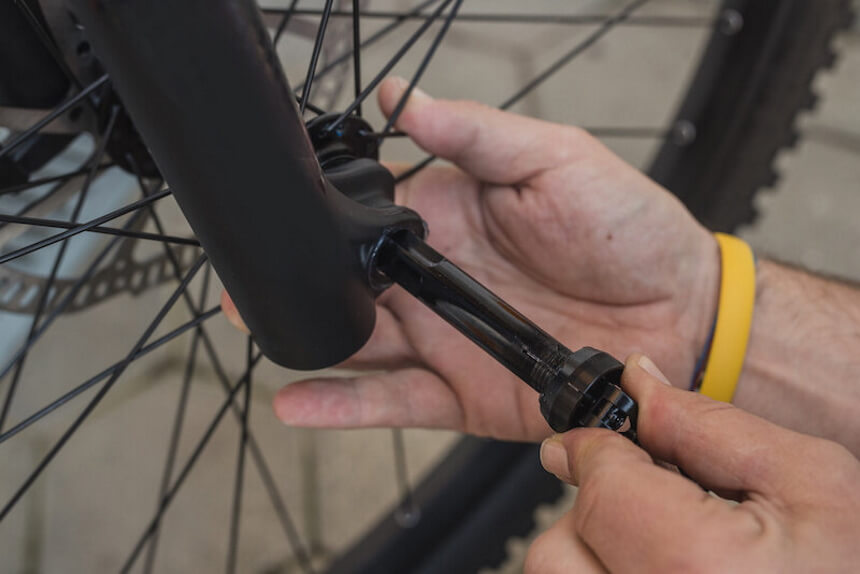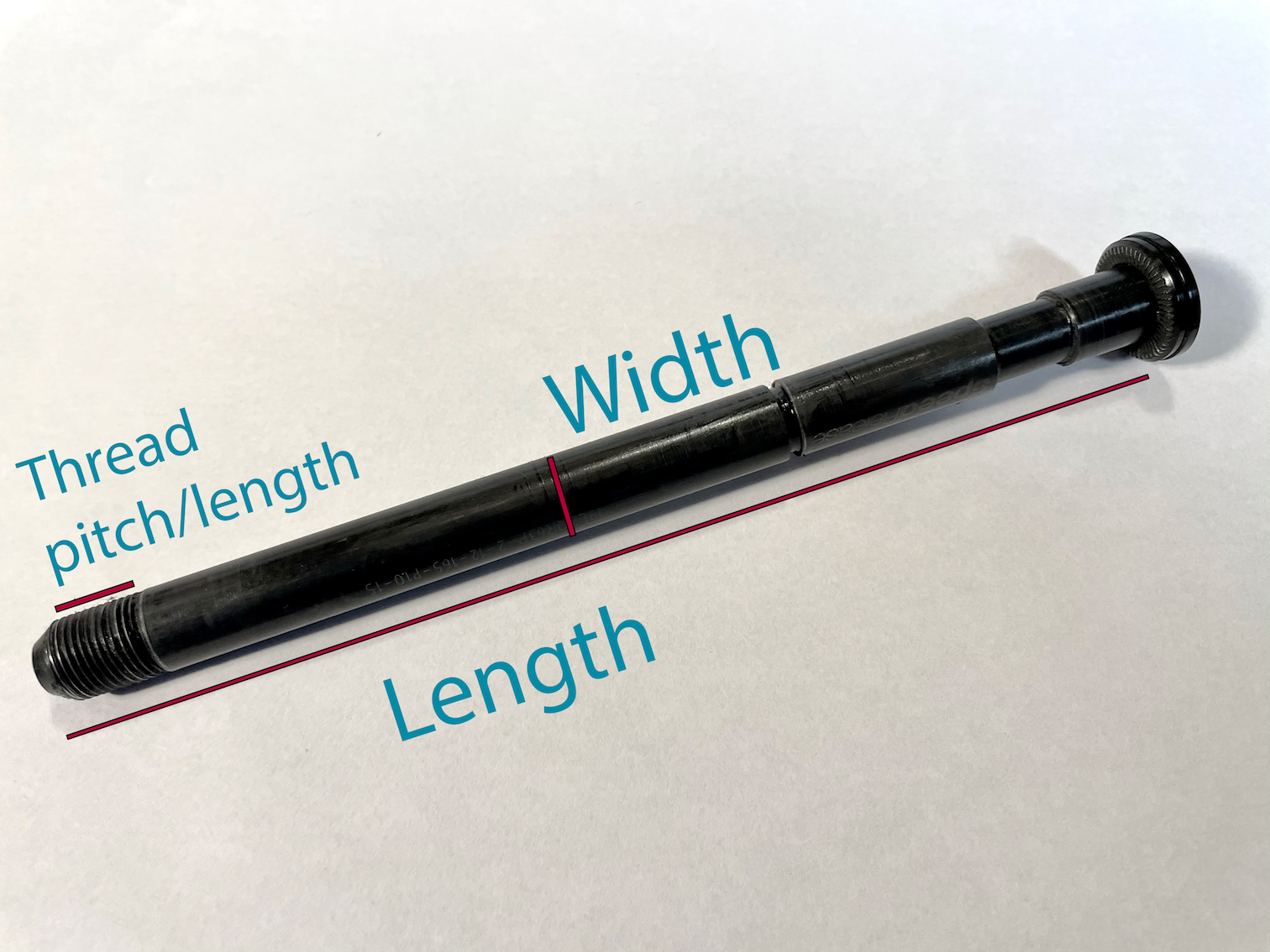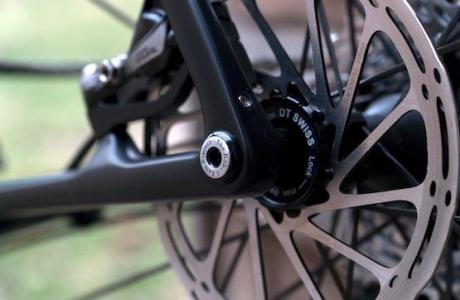Understanding Thru Axles: A Modern Standard for Road Bikes
Thru axles are a modern and secure alternative to traditional quick-release skewers in road biking. These threaded rods securely fasten the wheels to the frame and fork, providing enhanced stiffness, handling, and safety. The growing popularity of thru axles in road biking can be attributed to their superior performance and the increasing demand for improved wheel security.
How Thru Axles Improve Road Bike Performance and Safety
Thru axles offer several advantages over traditional quick-release skewers in road bikes. By securely fastening the wheels to the frame and fork, thru axles contribute to improved stiffness, handling, and safety. The mechanical benefits of thru axles stem from their design, which creates a more rigid connection between the wheel and the bike. This enhanced connection results in better power transfer, more precise handling, and increased stability, especially during high-speed cornering and heavy braking.
Different Thru Axle Sizes and Standards for Road Bikes
Several common thru axle sizes and standards are used in road bikes. The most prevalent sizes include 12mm x 142mm for rear wheels and 12mm x 100mm for front wheels. However, some road bikes may use 15mm x 100mm or 15mm x 135mm thru axles. These dimensions refer to the diameter of the thru axle and the spacing between the dropouts on the frame or fork.
Thru axle standards also vary based on the thread pitch, thread length, and the presence or absence of a lever. For example, the Syntace X-12 system features a unique thread design that allows for quicker wheel changes. Meanwhile, the Shimano E-Thru standard is specifically designed for electric road bikes with wider hub spacing.
When selecting a thru axle for a road bike, it is crucial to consider frame and fork compatibility, axle length, and diameter. Using the correct thru axle ensures optimal performance and safety. Always consult the bike manufacturer’s recommendations or the thru axle manufacturer’s guidelines to ensure a proper fit.
Selecting the Right Thru Axle for Your Road Bike
When choosing a thru axle for a road bike, it is essential to consider several factors to ensure optimal performance and safety. First, verify frame and fork compatibility with the thru axle’s diameter and length. Most modern road bikes use 12mm thru axles, but some may require 15mm or 10mm thru axles. Additionally, the axle length must match the frame and fork dropout spacing.
Next, consider the thru axle’s thread pitch and engagement. A finer thread pitch generally offers better engagement and durability, while a coarser thread pitch may be easier to install and remove. Additionally, some thru axles feature a lever for quicker wheel changes, while others require a tool for installation and removal.
Lastly, consider the thru axle’s compatibility with other components, such as disc brakes and electronic shifting systems. Some thru axles may interfere with these components, so it is crucial to consult the bike manufacturer’s recommendations or the thru axle manufacturer’s guidelines to ensure a proper fit.
In summary, selecting the correct thru axle for a road bike involves considering frame and fork compatibility, axle length, diameter, thread pitch, engagement, and compatibility with other components. Always consult the bike manufacturer’s recommendations or the thru axle manufacturer’s guidelines to ensure a proper fit and optimal performance.
Installing and Removing Thru Axles on Road Bikes: A Step-by-Step Guide
Installing and removing thru axles on road bikes is a straightforward process that requires a few simple tools and steps. Here’s a step-by-step guide to help you:
-
Shift the bike into the smallest chainring and smallest rear cog to create slack in the chain. This step makes it easier to remove the rear wheel.
-
Loosen the thru axle using a wrench or the appropriate tool. Some thru axles feature a quick-release lever that can be opened by hand.
-
Pull the thru axle out of the frame or fork dropouts, being careful not to lose any spacers or washers that may be attached.
-
Remove the wheel from the frame or fork, taking care to guide the chain around the cassette or freehub.
-
To install the wheel, reverse the process. Insert the thru axle into the frame or fork dropouts, ensuring that any spacers or washers are correctly positioned. Hand-tighten the thru axle, then use a wrench or the appropriate tool to tighten it to the recommended torque specification.
When installing and removing thru axles, it is essential to use the correct tool and torque specification to ensure optimal performance and safety. Always consult the bike manufacturer’s recommendations or the thru axle manufacturer’s guidelines to ensure a proper fit.
Popular Thru Axle Options for Road Bikes: A Product Review
When it comes to selecting a thru axle for your road bike, there are several popular options available. Here are some of the top choices:
DT Swiss RWS Thru Axles
DT Swiss RWS thru axles are known for their durability, ease of use, and compatibility with a wide range of frame and fork designs. They feature a quick-release lever that makes wheel installation and removal simple and fast. Additionally, they are available in various lengths and diameters to fit most road bikes. The DT Swiss RWS thru axles are moderately priced, making them an excellent option for riders on a budget.
Syntace X-12 Thru Axles
Syntace X-12 thru axles are designed for maximum stiffness and precision. They feature a unique thread pitch that provides better engagement and durability than traditional thru axles. Additionally, they are compatible with a wide range of frame and fork designs, including those with disc brakes. While they are more expensive than some other options, their superior performance and durability make them a popular choice among serious road cyclists.
Shimano Road Thru Axles
Shimano road thru axles are designed for compatibility with Shimano’s electronic shifting systems. They feature a quick-release lever and are available in various lengths and diameters to fit most road bikes. While they are more expensive than some other options, their compatibility with Shimano’s electronic shifting systems makes them a popular choice among riders who prioritize seamless shifting and integration.
When selecting a thru axle for your road bike, consider factors such as compatibility, axle length, diameter, thread pitch, engagement, and compatibility with other components. Always consult the bike manufacturer’s recommendations or the thru axle manufacturer’s guidelines to ensure a proper fit and optimal performance.
Maintaining and Troubleshooting Thru Axles: Tips and Tricks
Maintaining and troubleshooting thru axles is a crucial aspect of road bike maintenance. Proper maintenance ensures longevity and optimal performance. Here are some tips and tricks for maintaining and troubleshooting thru axles:
Cleaning
Cleaning your thru axle is a simple process that can help prevent corrosion and ensure smooth operation. Use a soft-bristled brush and mild detergent to remove dirt and debris. Rinse thoroughly and dry completely before reinstalling the thru axle.
Lubrication
Lubricating your thru axle can help reduce friction and ensure smooth operation. Use a light lubricant, such as a bike-specific grease or oil, on the threads and any moving parts. Be sure to wipe away any excess lubricant to prevent attracting dirt and debris.
Common Issues
Some common issues with thru axles include difficulty installing or removing the thru axle, stiffness or binding, and play or looseness in the thru axle. These issues can be caused by a variety of factors, including dirt and debris, corrosion, or improper installation. If you experience any of these issues, consult the bike manufacturer’s recommendations or the thru axle manufacturer’s guidelines for troubleshooting steps.
Preventative Maintenance
Preventative maintenance can help prevent issues with your thru axle and ensure optimal performance. Regularly inspect your thru axle for signs of wear or damage, and clean and lubricate it as needed. Additionally, be sure to tighten the thru axle to the recommended torque specification and check it regularly for tightness.
By following these tips and tricks, you can help ensure the longevity and optimal performance of your road bike thru axle. Regular maintenance and troubleshooting can prevent issues and ensure a safe and enjoyable riding experience.
The Future of Thru Axles in Road Biking: Trends and Innovations
Thru axles have become an increasingly popular standard in road biking, and manufacturers are constantly innovating to improve their design and functionality. Here are some emerging trends and innovations in thru axle technology for road bikes:
Integrated Thru Axles
Integrated thru axles are designed to be a more streamlined and aerodynamic option for road bikes. They are built directly into the frame and fork, eliminating the need for external thru axle hardware. This design reduces weight and improves aerodynamics, making it an attractive option for competitive road cyclists.
Wireless Thru Axles
Wireless thru axles are a new development in thru axle technology that eliminates the need for manual tightening. They use a motor or electronic system to automatically tighten the thru axle to the recommended torque specification. This innovation improves safety and convenience, making it easier to install and remove the wheel.
Smart Thru Axles
Smart thru axles are a cutting-edge development in thru axle technology that incorporates sensors and electronics to monitor performance and safety. They can provide real-time data on wheel position, torque, and tension, allowing riders to optimize their performance and prevent issues before they occur. This innovation has the potential to revolutionize road biking by providing riders with unprecedented levels of insight and control.
The Impact of Thru Axle Innovations on Road Biking
These emerging trends and innovations in thru axle technology have the potential to significantly impact road biking. Integrated and wireless thru axles can improve aerodynamics and convenience, while smart thru axles can provide riders with valuable insights and control. As these innovations become more widespread, they may become a standard feature on high-performance road bikes, further enhancing the riding experience for cyclists.
By staying up-to-date on the latest trends and innovations in thru axle technology, road cyclists can ensure they are using the most advanced and effective equipment available. Whether you are a competitive cyclist or a recreational rider, thru axle innovations can help you optimize your performance and safety on the road.








